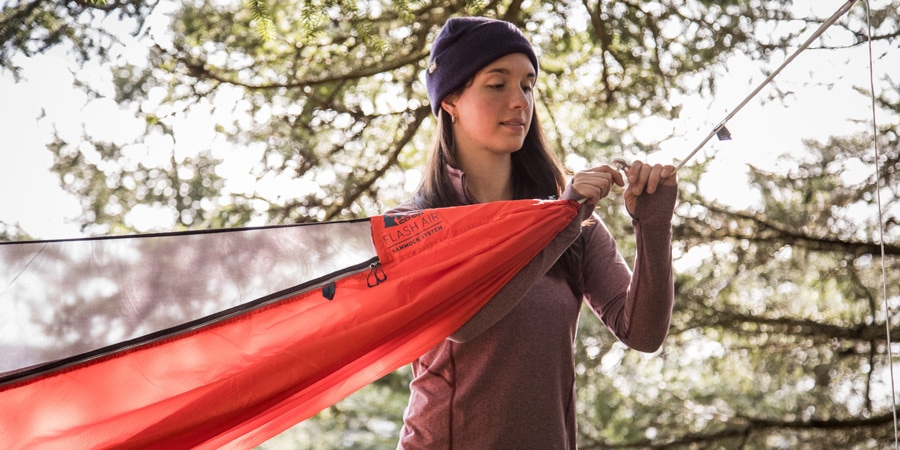Whether you're planning to just hang out or to go camping in the woods, you'll need to learn how to set up your new hammock. Fortunately, most hammocks come with simple setup instructions. A few general guidelines apply, though, including how to pick the proper place to hang it.
Because they require no ground clearing and little or no staking, hammocks are a minimum-impact shelter. When used with a tree-friendly suspension system, your hammock offers one of the most environmentally friendly ways to relax outdoors.
People who truly know how to hammock camp (or how to hang a hammock for the day) follow these three steps:
- Pick the right place to set your hammock up: Think Leave No Trace principles like setting up well away from a water source and using an established site that has no vegetation to damage. Also check under and around the hammock for any object that might injure you if you fall out.
- Pick the right trees and use wide straps: that means healthy (no dead branches), robust (thick trunk) and not harboring creatures you might disturb.
- Pick the right strap angle and height to hang your hammock: Your goal is about a 30-degree angle between the strap and the ground, and having the bottom of your hammock about 18 inches off the ground.
Still contemplating buying a hammock or a hammock tent? Read How to Choose a Hammock for advice on things to consider.
Where Can You Set Up Your Hammock?
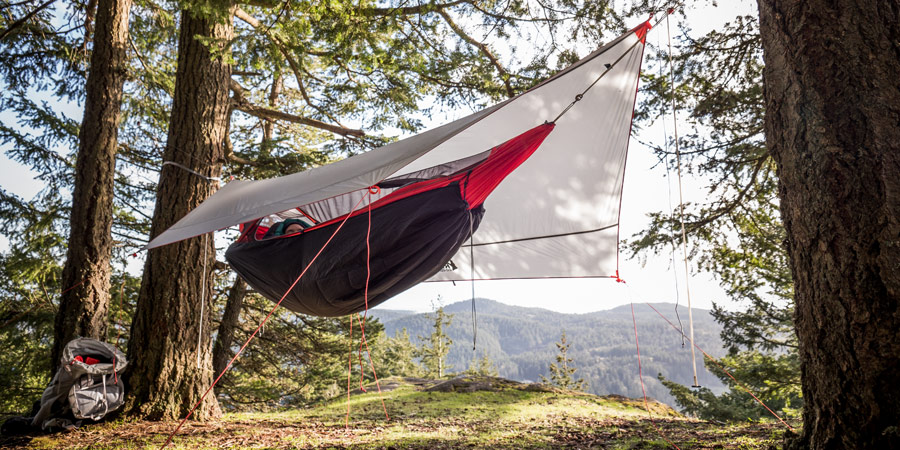
The usual principles of good backcountry stewardship apply whether you are day hammocking or sleeping overnight. Four good rules to follow include:
Check with local land managers to be sure the area allows hammocks. Not all places permit you to hang one. As the popularity of hammocks grows, and if more of us hang hammocks responsibly, then fewer parks will be inclined to prohibit them.
Set up your hammock at least 200 feet from any water source. Tempting as it might be to post a photo of your hammock hovering over a beautiful lake or spanning a stream, shoreline and riparian habitats are fragile—and too often damaged—by people who ignore this rule.
When you find a potential pair of hammocking trees, examine them closely. Check for sensitive plant life and wildlife habitat, as well as hazards such as insect nests and poisonous plants. Also seek out established sites with little or no vegetation that would end up getting trampled.
Never set up a hammock across a pathway that people or animals might use. It can be a potential hazard for both. Even if you don't see a well-worn path, examine surrounding terrain to see if it's a logical route down to a stream or lake. Taking down your hammock when you're away for the day is also good practice to ensure that no wandering animals or small children get snared while you're away.
Pick the Right Trees and Straps to Support Your Hammock
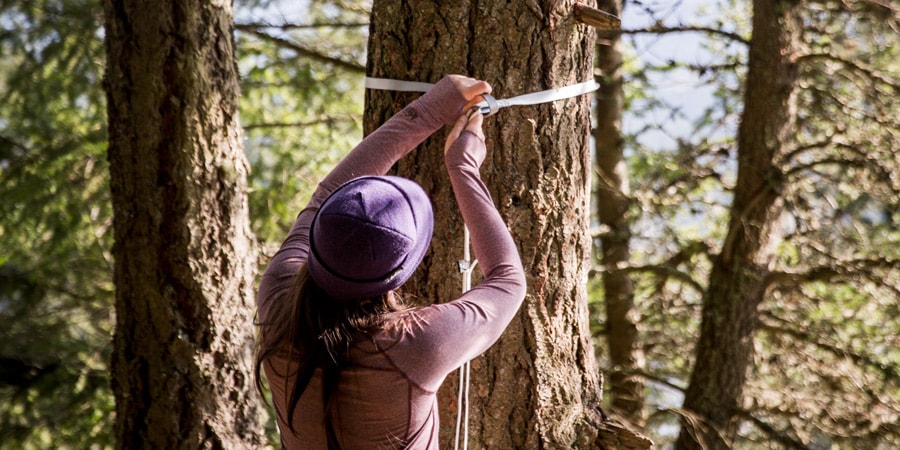
Your required distance between trees depends on the length and design of your hammock. After a few setups, though, you'll learn what distance works best. You also have some additional considerations beyond the spacing of trees:
Don't hang your hammock from trees that are unhealthy or have dead branches. You could injure yourself and damage the ecosystem if the tree you choose (or one of its limbs) were to fall. Also look for trees that are robust: at least six inches in diameter.
Always use tree saver straps: Rope or cord can dig in and damage underlying layers vital to a tree's survival, so use these wide (0.75" or more) nylon/polyester webbing straps that guard against bark abrasion. Never use anything that's thin and unforgiving like a plastic zip cord or wire, and never hammer or screw anything into a tree.
Reduce tree stress by never attaching more than one hammock to a tree. Spread out multiple hammocks, with each person using different trees. You'll reduce the strain on individual trees and disperse the impact of your group.
Even though stacked hammock photos might look intriguing, it's a setup that strains trees and risks a painful fall for upper hammockers (and anyone unlucky enough to be below them).
How to Hang Your Hammock at the Best Angle and Height
The setup tips below should work well for most hammocks. Follow your hammock's setup instructions, though, wherever they might differ from these suggestions. Ultimately, whatever feels comfortable when you crawl in should work fine—no need to pack along a protractor and tape measure.
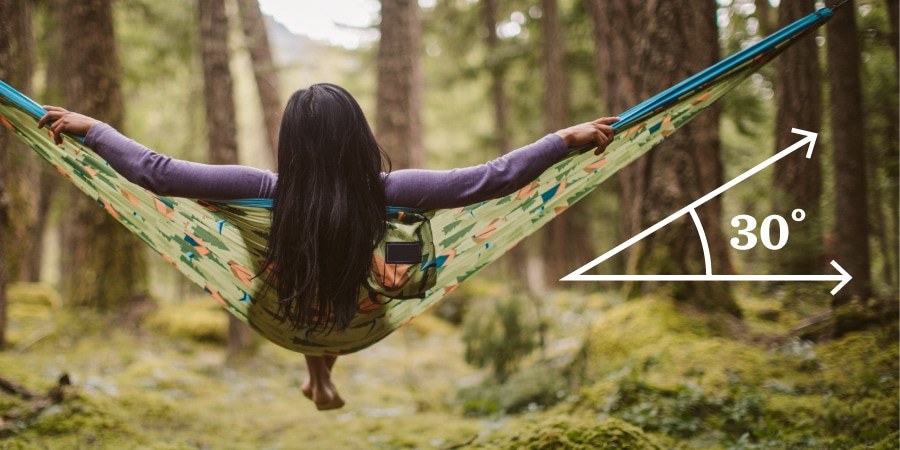
Try to have a 30-degree strap angle between the strap and the ground: It's tempting to pull the hammock as taut as possible to create a flatter sleeping platform, but that creates tension in the sides, which can feel a little constricting.
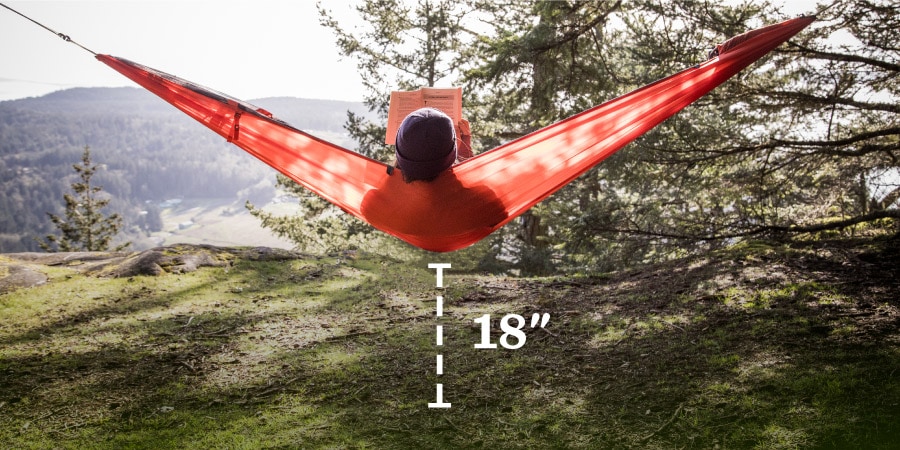
Hang your hammock so it's no more than 18" off the ground. When the lowest point of the hammock is at that height (with you inside it), getting in an out is relatively easy and falling out of it isn't likely to lead to a serious injury.
Sleep at a slight angle: Not a setup tip exactly, but it solves the problem of having your back bow uncomfortably. Simply angle your body about 10-15 degrees away from the centerline after you crawl in and your body will lie in a more horizontal state.
